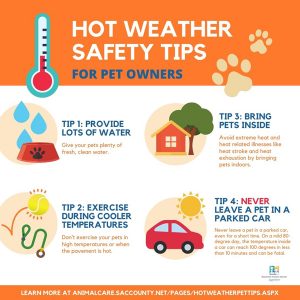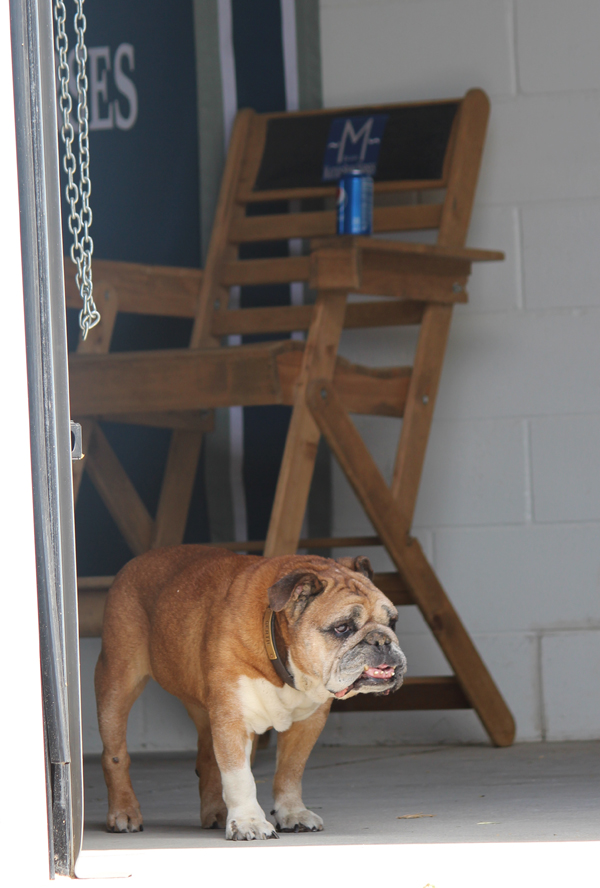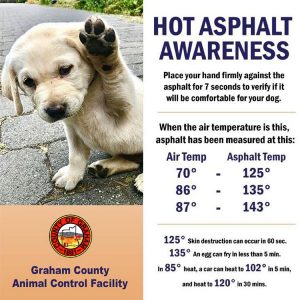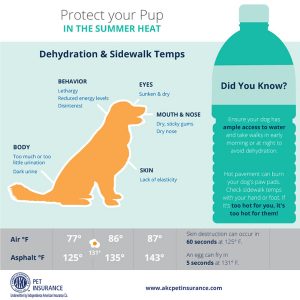How Hot Is Too Hot for Dog Paws?
By Elaine Waldorf Gewirtz, AKC
How Hot Is Too Hot for Dog Paws?
When the thermometer registers 85 degrees and stays elevated throughout the day, taking your dog everywhere you go or even for a short outing can lead to a serious injury. Spending even a few minutes to meander through an outdoor event can prove hazardous.
That’s because you’re wearing shoes to protect your feet, but your dog isn’t.
“Pavement, like asphalt or artificial grass, can become incredibly hot and cause discomfort, blisters, and burn a dog’s paw pads,” says Jerry Klein, DVM, AKC’s Chief Veterinary Officer and an expert in veterinary emergency and critical care.
Scorching surfaces are especially damaging to puppies with sensitive young paws.
So how hot is too hot for a dog’s sensitive paw pads?
“If the temperature is 85 degrees or over without the chance for the pavement to cool down, the ground may be too hot for safely walking a dog,” says Klein.
According to data reported by the Journal of the American Medical Association, when the air temperature is 86 degrees, the asphalt temperature registers 135 degrees.
“To find out if the ground is too hot for your dog to walk on, place your hand comfortably on the pavement for 10 seconds. If it’s too hot for your hand, it’s too hot for your dog’s paws,” says Klein.
Your bare foot serves as another good barometer.
Hand or foot, the same temperature test works on all types of terrain, including sand, metal, and concrete.
And when it comes to the so-hot-you-can-fry-an-egg-on-the-sidewalk surface, don’t discount dirt. A social media post shows how a soldier on a hot day went the distance over dry land for his canine partner. To avoid burning his dog’s paws, the soldier hoisted the German Shepherd Dog on his shoulders and carried the dog for eight miles.
Heat-Related Health Issues for Dogs
“In addition to damaged paws, hot pavement can also increase a dog’s body temperature and contribute to the development of heatstroke,” says Klein.
A dog’s normal resting temperature ranges from 99 to 102.5 degrees Fahrenheit. Any temperature over 104 signals heat stress. Over 105 registers as heat exhaustion, and more than 106 is heatstroke requiring emergency veterinary care.
 Watch your dog for these signs of heat stress and treat immediately:
Watch your dog for these signs of heat stress and treat immediately:
- Seeking shade
- Limiting movement or restlessness
- Choosing to sit or lie down
- Uncontrolled panting
- Nausea and vomiting
- Skin reddening
- Excess saliva
Symptoms of heatstroke requiring immediate veterinary attention:
- Confusion
- Excessive drooling and thickening of saliva
- Bright red or blue or purple gums
- Dizziness
- Rectal bleeding
- Refusing to drink water
- Lethargy
- Loss of consciousness
- Seizure
To cool your dog:
- Find a shady spot
- Apply ice packs under the front legs at the chest
- Pour cool water over his head and body
- Give water to drink
- Find air conditioning indoors or in a cooled-off car
- Give your dog a cooling mat to stand on.
- Small and short-legged dogs are particularly susceptible to overheating as their bodies absorb heat closer to the hot ground. Flat-faced breeds heat up faster, too.
Protecting Dog Paws in Hot Weather
“Dog’s pads need to become acclimated to weather and stress,” says Klein. “The first long walk or jog of a warm season can often cause blisters on feet.”
To help condition your dog’s paws, walk on the pavement during cool weather. The hard surface helps toughen them and builds resistance for when the temperature heats up.
Many canine products help moisturize dog’s pads to prevent cracking from heat. When pads are dry, they’re more susceptible to burns from hot pavement.
Dog shoes or all-terrain boots offer protection from hot surfaces, but many dogs need time to adjust to wearing them before the first outing.
Getting the right size—fitting snugly, but not too tight and not too loose—helps your dog acclimate to wearing shoes. Your dog’s feet need some room to breathe. Choose foot coverings with wrap-around closures and full-foot grips on the bottoms. Avoid products that stick to the dog’s pads.
If you must take your dog out during hot weather, avoid the hottest time of day. Walk in the early morning or evening. Choose grassy or shady areas.
For exercise during hot weather, set up a hard, plastic outdoor wading pool made for dogs. Plastic children’s pools tempt dogs to dig and tear. If your dog swims in an adult pool, add a canine life vest for safety.













